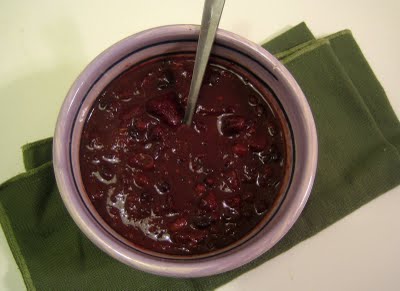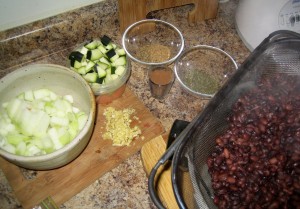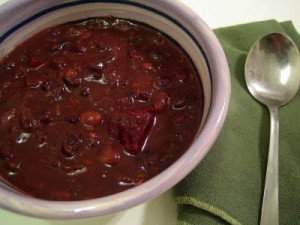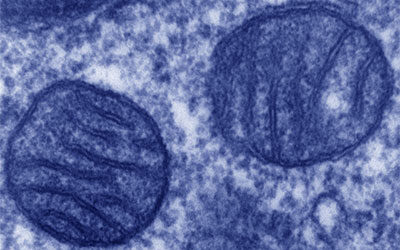
photo provided courtesy of affairsofliving.com
When I woke up yesterday morning, I noticed something remarkable. My nose was cold. Not just a little chilly, but downright cold. I had left my bedroom window open, as usual, but this time, something was different. This time, the night air had a bite to it, that crisp twist indicative of the change of seasons, of Fall’s inevitable return. That cool night air crept into my bedroom while I slept, and it left its mark on my face. According the the weather man on my clock radio, it was only about 42º F outside; from the feel of the air in my bedroom, and feel of the tip of my nose, I believed him. It’s funny how we all doubt the weatherman’s predictions of beautiful weather, but never doubt the proclamation of cold temperatures. So, I hit the snooze, buried my face in my pillow, and pulled the quilt over my head, nestling into the warm cocoon of my bed. There is nothing more delicious (except this chili, recipe that is).
Once I finally decided to greet the day, well before the sun, I was struck with the most intense desire for chili, and concurrently, the most intense onset of goosebumps. So, I threw some dry black beans in a bowl to soak, unsure of what direction the chili would take, but with a hope for something great. Then I put on gloves, a down vest, and a scarf, and hopped my bike to commute to work. By the time I arrived downtown, my cheeks were flushed, and my hot breath became visible in the cool air. The streets were filled with blazers, scarves, and pea coats, a drastic departure from the sundresses, sandals, and linen of only a month ago.
All day I thought about the chili while checking emails, and sometime mid-afternoon, I was struck with what I considered the most brilliant idea: instead of stewed tomatoes, a chunky beet puree would form the base of my chili. It seemed like the perfect way to tackle the beets in my crisper and add great flavor and body to the soup. Sure, you can make tomato free chili, but it is never really quite the same, in my opinion. There needs to be something there. Pureed beet sauce would be just the right thing. Hey, why not? Beet and black bean vegetable chili sounded great to me. I’ve been using beets in a ton of recipes lately, so it fit the theme. Plus, all those “b”s were screaming for a catchy name like “Triple B” Chili.
YES! I had a plan.
 So, when I got home, my tummy grumbling and the urge for chili even stronger, I threw the beans and beets in the pressure cookers, and set to work. I love soups that are brimming with vegetables, so I chopped up garden-fresh sweet onions, garlic, carrots, and zucchini to add to the mix. For seasonings, I decided on a mix of cumin, coriander, basil, and a bit of roasted carob powder for a smoky sweet flavor. In the end, the chili was thick, chunky, and incredibly flavorful and satisfying. For a bit of extra smoky flavor, I added a pinch of smoked salt (yum…). Visually, this soup is a winner – it is a beautiful deep burgundy red color, flecked with bits of green, orange, red, and black. But best yet, it is totally tomato free! For all of you sensitive to tomatoes, this is the perfect solution, you won’t even miss ’em! And if you’re one of those people that is uneasy about beets, don’t worry – their strong flavor is tempered by the beans, vegetables, and seasonings. Easy to prepare, and full of protein, fiber, and loads of vitamins and minerals, this soup is ideal for a chilly night. It should freeze well, so make a batch, and save some for later. The vegetables are totally interchangeable, so feel free to customize to fit you your needs. Can’t do carrots or zucchini? Try adding bell pepper, or if you can, fresh corn (lucky you!). Intolerant to onions? Leave ’em out, and add an equal amount of other vegetables. Like it spicy? Add chili powder, cayenne, or fresh diced jalepeño peppers. Make it yours!
So, when I got home, my tummy grumbling and the urge for chili even stronger, I threw the beans and beets in the pressure cookers, and set to work. I love soups that are brimming with vegetables, so I chopped up garden-fresh sweet onions, garlic, carrots, and zucchini to add to the mix. For seasonings, I decided on a mix of cumin, coriander, basil, and a bit of roasted carob powder for a smoky sweet flavor. In the end, the chili was thick, chunky, and incredibly flavorful and satisfying. For a bit of extra smoky flavor, I added a pinch of smoked salt (yum…). Visually, this soup is a winner – it is a beautiful deep burgundy red color, flecked with bits of green, orange, red, and black. But best yet, it is totally tomato free! For all of you sensitive to tomatoes, this is the perfect solution, you won’t even miss ’em! And if you’re one of those people that is uneasy about beets, don’t worry – their strong flavor is tempered by the beans, vegetables, and seasonings. Easy to prepare, and full of protein, fiber, and loads of vitamins and minerals, this soup is ideal for a chilly night. It should freeze well, so make a batch, and save some for later. The vegetables are totally interchangeable, so feel free to customize to fit you your needs. Can’t do carrots or zucchini? Try adding bell pepper, or if you can, fresh corn (lucky you!). Intolerant to onions? Leave ’em out, and add an equal amount of other vegetables. Like it spicy? Add chili powder, cayenne, or fresh diced jalepeño peppers. Make it yours!
As I felt cool air sneak in through my open living room window, I relished in a bowl of my chili, garnished with fresh chives. I had harvested a mighty handful from the garden earlier in the evening when I went to cover my plants. Yes, that’s right – we had our first frost advisory in the Twin Cities last night, and I’m not quite ready to give up on the garden yet. So, I was spooking around the backyard in the dark, covering my tender plants with old sheets, and harvesting chives, tarragon, rosemary, and basil to put in the dehydrator. I picked the last cucumber, the last zucchini (finally!), and the second to last butternut.
Yes, the weatherman was right, the weather is changing, the temperatures are cooler, and Fall is upon us. I see it in the earth, I feel it in my body, and I’m welcoming it with open arms, a hungry tummy, and steaming bowls of soup.
 ingredients
ingredients
• 2 cups dry black beans (about 4 cups cooked) + water for soaking and cooking
• 3 large beets, whole
• 1 large onion, chopped (about 2 cups)
• 3-4 garlic cloves, crushed and finely chopped
• 2-3 cups chopped vegetables of choice (carrot, zucchini, bell pepper, corn, etc.)
• 2 T cumin seeds
• 1 tsp ground coriander
• 2 T extra virgin olive oil, coconut oil, or other oil
• 2 T roasted carob powder or cocoa powder
• 2 T dry basil
• 1 1/2 tsp sea salt (or, add in a pinch of smoked salt – yum!)
• 1 c water + 2-3 c stock, water, or bean cooking liquid
• optional: 1 Tbsp apple cider vinegar or lemon juice, or 1/4 tsp vitamin C crystals (adds an acidic quality, similar to tomato-based chili)
optional add-ins to pick and choose (I didn’t add because I’m currently avoiding them, but if I could, I would!):
• 2 T dry oregano
• 1/2-1 T smoked paprika
• 1 tsp chile powder
• 1/4 tsp cayenne pepper
• 1/4-1/2 chipotle pepper powder
directions
- If starting with dry beans, soak in 6 c water for 6-8 hours. Drain, rinse, and cook beans by desired method (stovetop, slow cooker, or pressure cooker) with fresh water. When beans are tender, drain, and save any of the bean cooking water. If using canned beans, rinse well before using
- Wash and trim beets, leaving skins on and 1″ of the stem, if possible. Cook whole beets by desired method until tender. You can do them in the oven (puncture, wrap in foil, cook 400* for about 45 minutes), boil them (large pot with fresh water, boil for about 30-40 minutes), or put them in the pressure cooker (15 lbs pressure for 20 minutes) until tender. When beets are tender, run under cold water to cool, then slip off skins.
- While beets are cooking, heat olive oil in a large stockpot over medium heat, add cumin seeds and coriander, and saute until fragrant. Add chopped onions and garlic, stir, cover, and saute for 3-5 minutes. Add chopped vegetables and a splash of water, then cover, and saute an additional 10 minutes, stirring occasionally, until vegetables are tender.
- To make beet puree, coarsely chop two of the peeled beets (about 2 1/2 c), and add to food processor/blender with 1 c water. Pulse a few times, then blend until thick and smooth, like a chunky tomato sauce. Dice the remaining beet, and add to stockpot.
- Next, add beet puree to stockpot, along with carob powder, basil, any optional herbs/spices, and 2 cups of the remaining bean cooking liquid, water, or stock. Stir to mix.
- Bring to a simmer, then cover, and cook on medium low for about 10 minutes, stirring occasionally, adding additional 1 c liquid as necessary for desired consistency and adding salt and adjusting seasonings as needed.
- Serve immediately, or cool and freeze for later. If desired, garnish with fresh chives or cilantro, a dollop of something creamy (non-dairy or dairy yogurt, sour cream, cashew cream, or whatever else you do), or something cheesy.
makes about 2 1/2 quarts
recipe courtesy affairsofliving.com










0 Comments